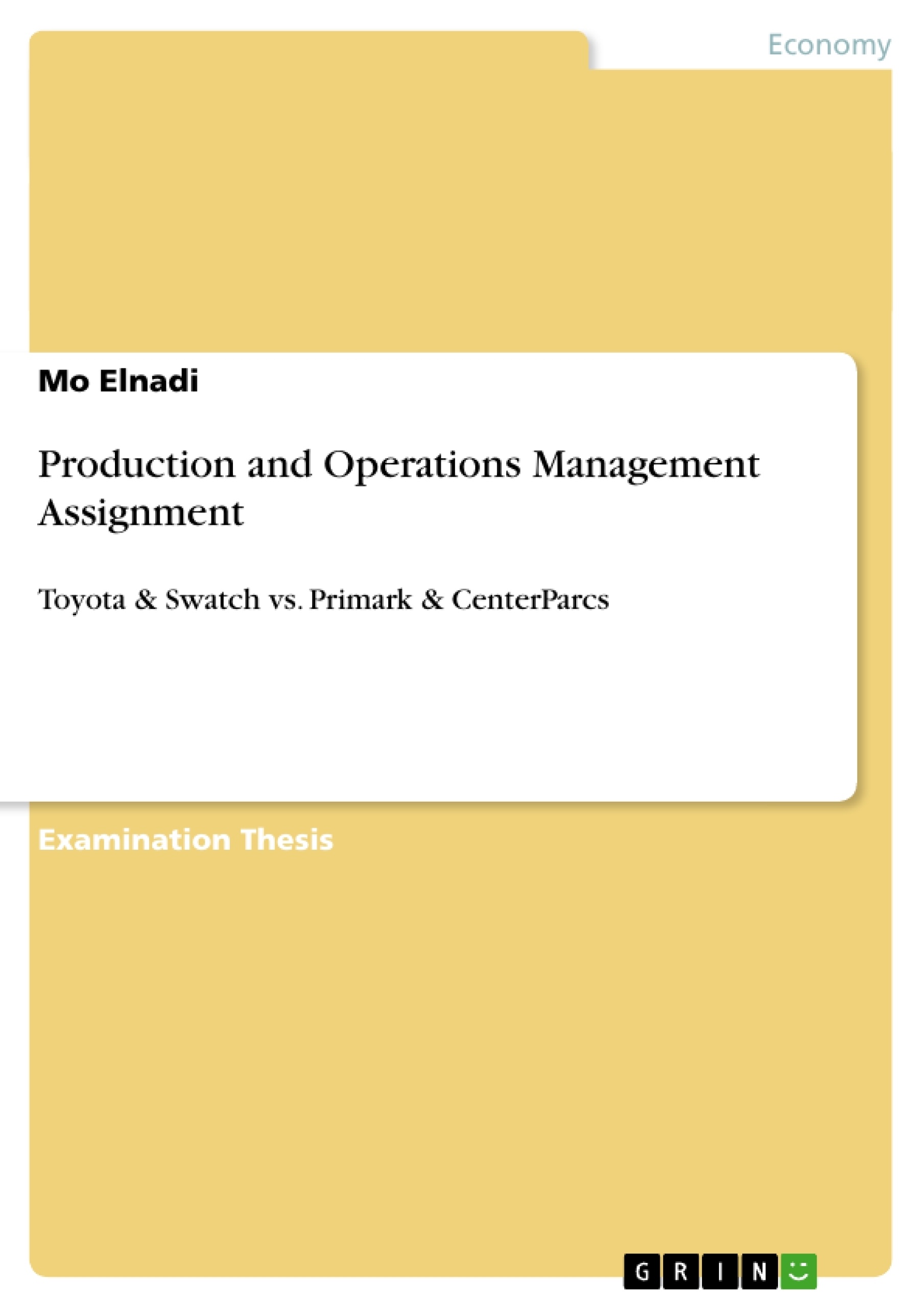Excerpt
Introduction
According to Slack, operations strategy can be defined as the strategic decisions and tactics which set the role, objectives and activities of a firm. It derives from the firm’s capabilities, resources and processes, seeking to deliver competitive advantage to winning customers through meeting their needs (Slack et al., 2009b). Competitive factors that are significant in winning customers’ business are order winners. Improvements of these factors will likely result in gaining more business to the firm. In order for a firm to have a competitive advantage, it must understand and provide products and services whose factors create order winners for its customers (Slack et al., 2009a). As a precursor, factors which customers have a certain minimum expected level from are defined as order qualifiers that firms should conform to. Therefore business decisions should be thought of in terms of order winning and order qualifying criteria, designed to win customers and drive business growth to the firm.
A firm can outperform rivals only if it can establish a difference that it can preserve. This could be delivering great value to customers or creating comparable value at a lower cost, or both. Such differentiation arises from both the choice of performance objectives activities and how they are performed, or deliberately choosing a different set of activities to deliver a unique mix of value or perform similar operational activities better than rivals. (Porter, 1996)
Operations managers should decide on which of the sub-dimensions of these five performance objectives (Figure 1) they wish to excel at, and how they are going to configure the operation to do so. (Neely, 2008)
illustration not visible in this excerpt
Figure 1: The Multiple Dimensions of the Five Operations Performance Objectives adapted from: (Neely, 2008)
The goal of this paper is to investigate and compare operations strategies of two manufacturing-based and two service-based companies. The paper takes an integrated evaluation approach of each firm’s prioritised performance objectives from a requirements and operations capability point of view, as well as focusing on line of fit strategy and tactics to achieve competitive advantage through examining their process design, capabilities management and resources management.
Chosen organisations
1. Primark
Primark operates 194 discount department stores throughout the UK (Figure 3), Holland and Spain. Its the UK's second largest clothing retailer and its largest value clothing retailer targeting the under-35-year-old, fashion-conscious market through 13 departments including womenswear, lingerie, childrenswear, menswear, footwear, accessories, and household textiles providing range flexibility to consumers (Figure 2). (Hoovers, 2008b)
illustration not visible in this excerpt
2. CenterParcs
CenterParcs operates four forested holiday villages, which attract vacationers by offering such amenities as villas, swimming pools, restaurants, high street shops, lakes and spas. CenterParcs caters primarily to the "short-break" market. The villages have nearly 3,400 units in four categories ranging from standard villas to exclusive four-bedroom villas. (Hoovers, 2008a)
The profitability of companies in the leisure sector depends on efficient operations, and effective marketing since capacity is a constraint. Large companies have operations economies of scale advantages and large amounts of capital, but operations are labour-intensive. Small companies can compete effectively in favourable locations and by providing specialty services through their capability which CenterParcs focuses on as order winners.
The sector is fragmented with 6% of adults visiting CenterParcs in the last two years followed by Butlins, which focuses on coastal holiday parks (Figure 4). (Mintel, 2008c)
illustration not visible in this excerpt
Figure 4: Leading owners of holiday centres in the UK, 2008. Source: (Mintel, 2008c)
3. Swatch
Swatch is the world's second-largest watchmaker after Citizen (JCKonline.com, 2009) with more than 333 million watches sold worldwide in over 2,500 different models in 80 markets. Total 2008 UK market is estimated to be worth £880 million (Figure 5). (Mintel, 2008d, Quest, 2006)
Swatch has four brand segments: Basic, Middle, High and Luxury. Its 19 brands range from low-priced, collectible Swatch and Flik Flak to premium-priced Blancpain, Brequet and Omega brands. Their watches are sold at 15,000 retailers worldwide, 500 Swatch stores, shop-in-shops and kiosks. (Hoovers, 2008c)
The company supplies all the components for its own watches and supplies other watchmakers with a market share of 38% in Japan (Talylor, 1993), and more than 25 percent of total watch and component sales and 10% of global watch revenues (Press, 2000).
illustration not visible in this excerpt
4. Toyota
Toyota is the world’s largest car manufacturer. They overtook rivals Chrysler and Ford in worldwide sales and surpassed GM in 2008. (Hoovers, 2008d) The company also formed a joint venture, NUMMI, with General Motors. (Datamonitor, 2008)
They produce Prius a hybrid-powered sedan among 70 other models including Camry, Corolla, Land Cruiser and Lexus which are available in over 170 countries worldwide (Datamonitor, 2008). They also manufacture automotive parts and accessories through 52 manufacturing facilities in 27 countries. (MarketWatch, 2008)
[...]
- Quote paper
- MBA Mo Elnadi (Author), 2009, Production and Operations Management Assignment, Munich, GRIN Verlag, https://www.grin.com/document/129763
Publish now - it's free























Comments